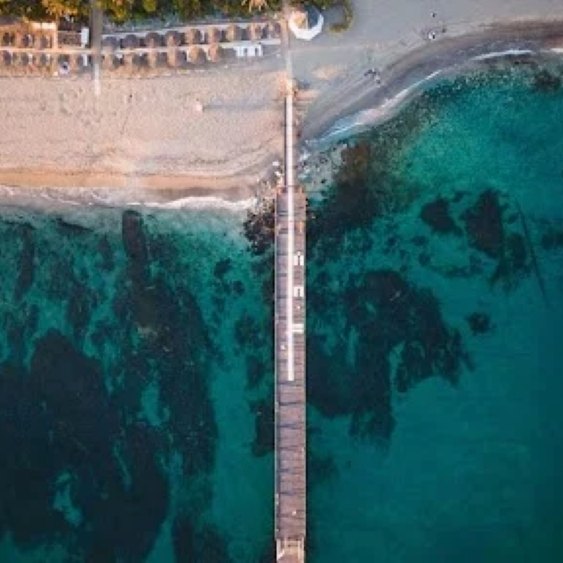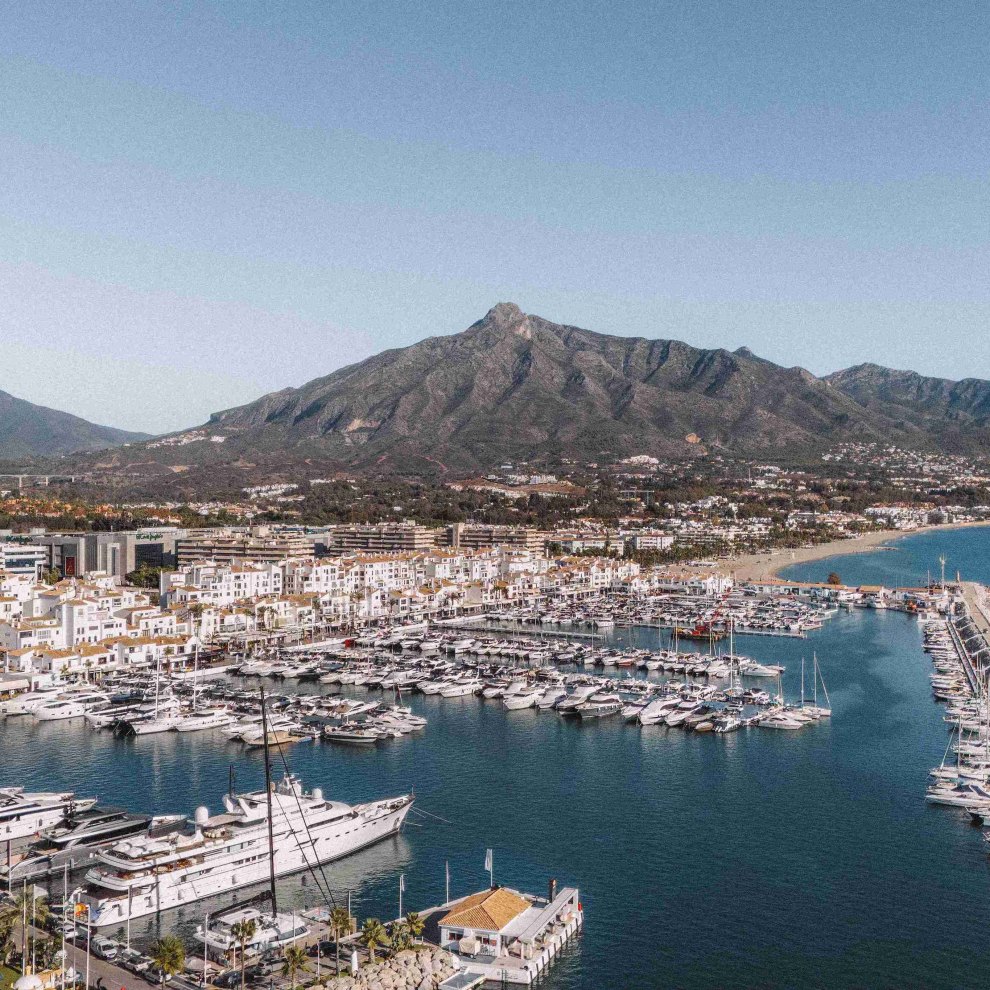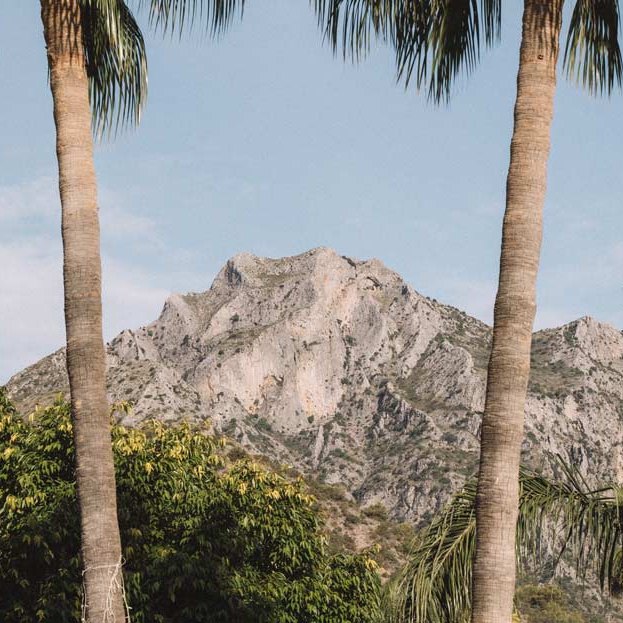
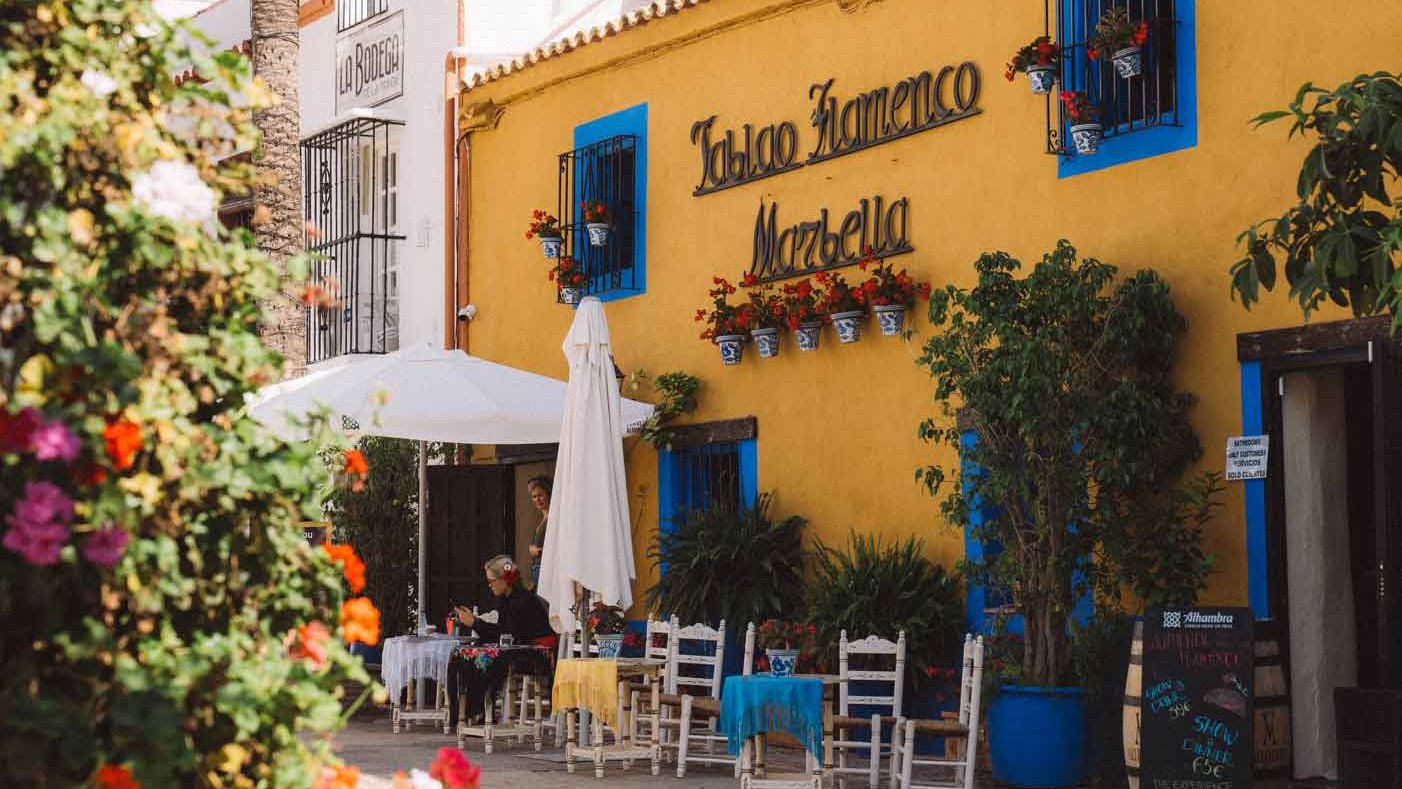
Downtown Marbella
Teba Siles | · 30 min. read
Just a century ago, Downtown Marbella was a modest fishing, mining, and agricultural village with fewer than 10,000 residents, deeply rooted in its millennia-old traditions. Fast forward 100 years, and the transformation is nothing short of extraordinary.
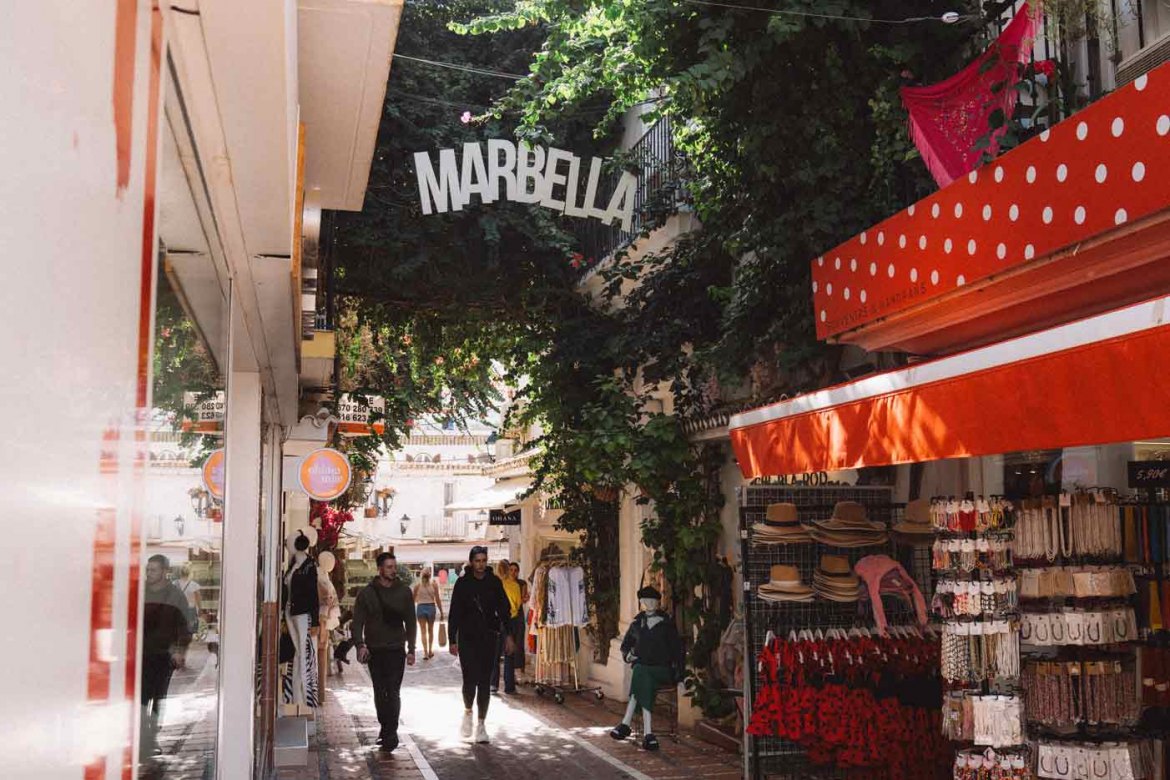
Today, Marbella is a thriving city of over 160,000 registered inhabitants—plus tens of thousands more unregistered residents—welcoming millions of visitors from across the globe. Many are captivated by its charm as they wander through the enchanting, narrow streets, picturesque squares, and historic churches of the Old Town.
Stretching along 27 kilometers of Mediterranean coastline, Marbella boasts some of the most luxurious villas in Europe and claims five of Spain’s ten most expensive streets for property investment. Its dynamic real estate market, driven by multi-billion-euro developments, continues to attract retirees, real estate investors, and families alike.
Beyond its vibrant property scene, Marbella is a gastronomic haven, home to five Michelin stars across four exceptional restaurants, making it Andalusia's culinary capital. Complementing this are its four bustling marinas—Cabopino, La Bajadilla, Virgen del Carmen, and the iconic Puerto Banús—all set against the stunning backdrop of Sierra Blanca, whose protective embrace creates Marbella's famed microclimate.
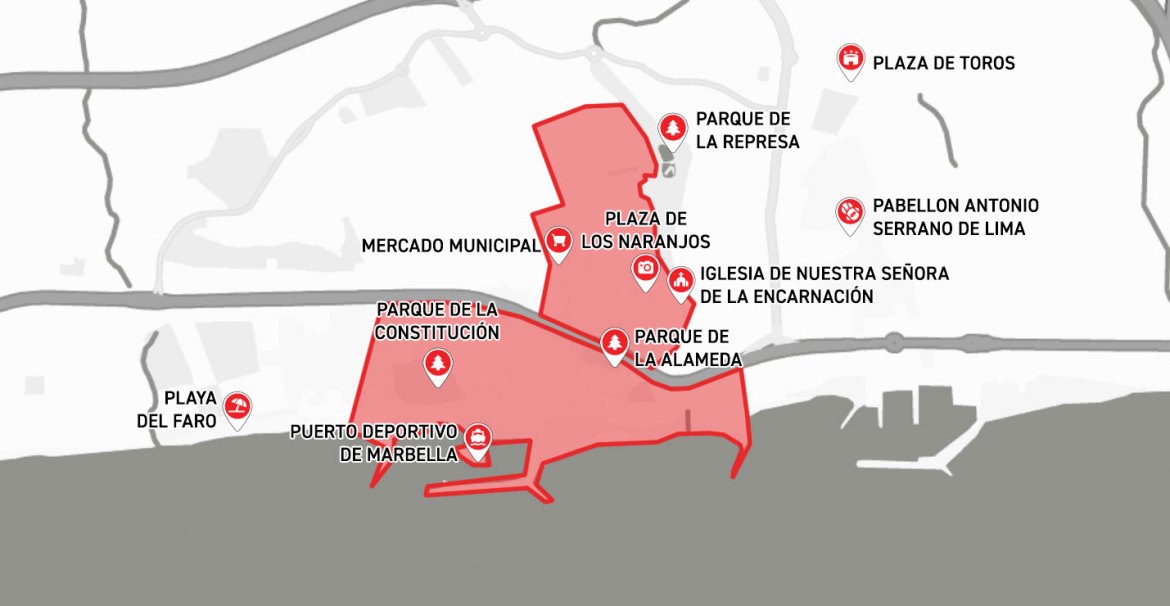
- Table of contents
- History and Charm of Downtown Marbella
- Real Estate in Downtown Marbella
- Final Thoughts: A Guide to the Vibrant Core
History and Charm of Downtown Marbella
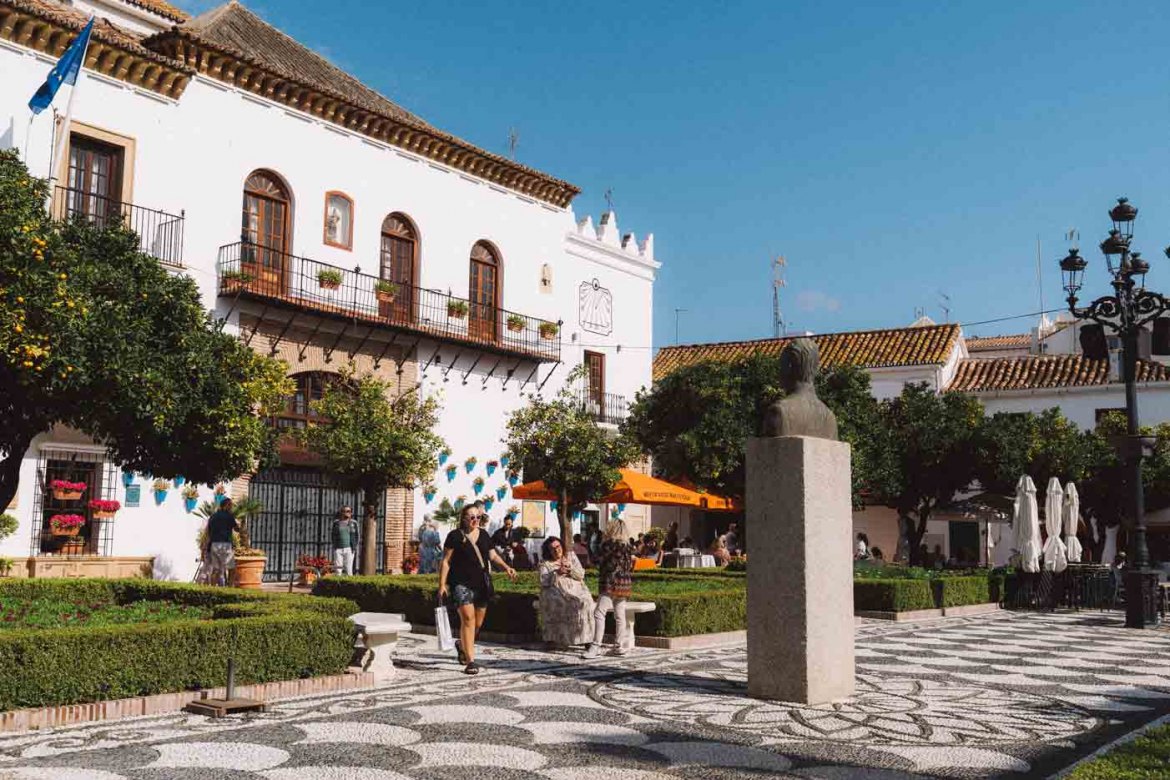
Marbella has evidence of human occupation for thousands of years. The discovery of human remains and various objects in the cave of Pecho Redondo in Sierra Blanca, near the shopping center La Cañada, evidence of human presence since 25,000 years ago.
All cultures have passed through Marbella: Phoenicians, Romans, Visigoths, Arabs, etc. All have left their mark in the form of historical remains such as the Phoenician factory of Rio Real, the Roman Villa of Rio Verde, the Roman Baths of Las Bóvedas, the Paleo-Christian Basilica of Vega del Mar, the Roman-Arabic Castle in the Old Town and the Arab layout of the Old Town, etc.
After the Christian reconquest in 1486, Marbella became a small commercial town where vineyards were cultivated and where fishing occupied many of its inhabitants. During the 19th century, with the installation of the first blast furnaces in Spain, in El Ángel and La Concepción, to take advantage of the iron from the Sierra Blanca mines, Marbella joined the industrialization of Malaga, which became the second most industrialized province in the Peninsula.
In the 20th century, after the Second World War, the arrival of a Spanish-German nobleman, Ricardo Soriano, Marquis of Ivanrrey, marked the beginning of the arrival of tourism in Marbella. Both Soriano and his nephew Alfonso de Hohenlohe attracted the world's social elite to this then rustic and authentic corner of the Costa del Sol: Hollywood actors, aristocrats, and businessmen of international level.
Marbella began to grow in an incredible way, during the second half of the twentieth century and evolved into what it is today: a bustling and cosmopolitan city where more than 160 nationalities live together and has all the necessary services to serve millions of tourists every year.
Exploring the Heart of the City
Downtown Marbella stretches from the famous Arco de Marbella in the East to the monument known as the Pirulí in the West, right from the beginning of the Golden Mile. To the south, it borders the Mediterranean Sea and to the north, it is bounded by the Sierra Blanca Mountain range.
It has one of the most impressive old quarters of the Costa del Sol and of the whole province. With dozens of narrow and well-kept streets, beautiful squares, and numerous stores. Two elements stand out in this area of the city: the Plaza de los Naranjos and the church of the Encarnación.
To the south of the old town is the Alameda, a beautiful centennial park that connects to the beach through the Avenida del Mar, a street full of statues. From this point you can enjoy the Paseo Marítimo for several kilometers in both directions. This is a place full of restaurants and stores next to the sand of the Mediterranean Sea.
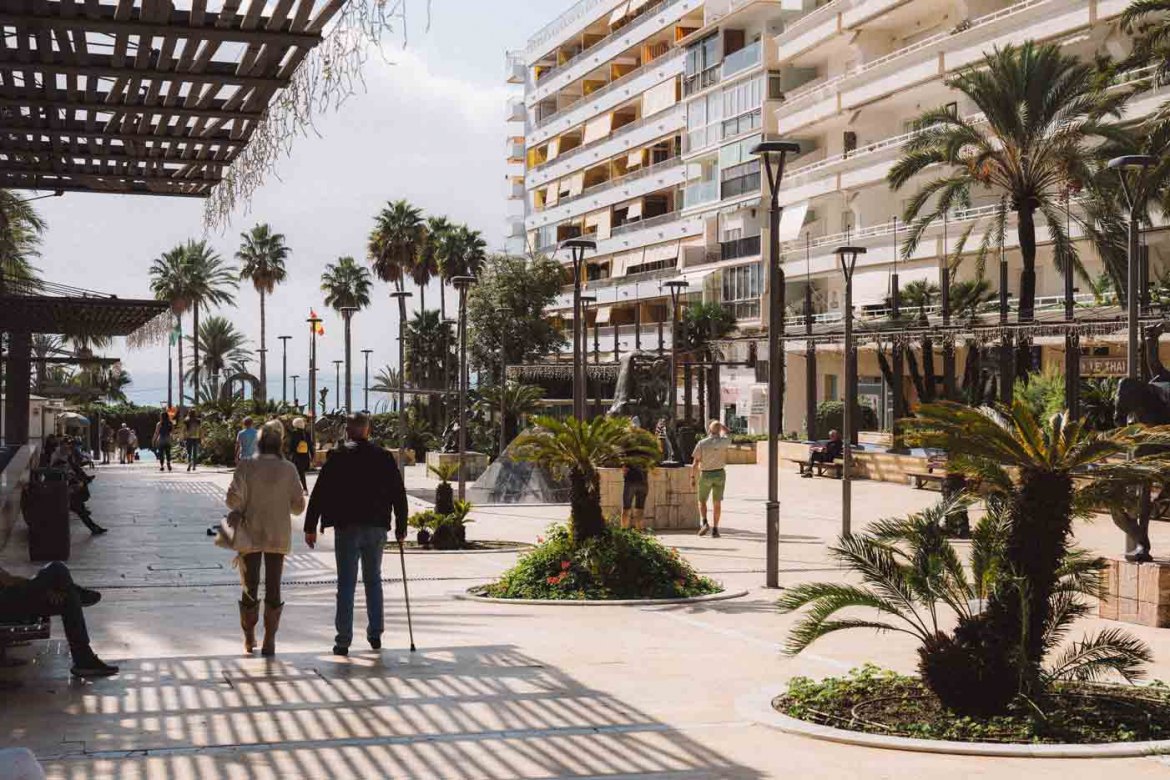
From the Paseo Marítimo you can approach the two ports that are in Marbella Center. El Pesquero is a marina for fishermen and owners of pleasure boats and sailboats. It has several restaurants and beach bars where seafood is the specialty. The Virgen del Carmen Marina is a leisure marina: it has restaurants, bars and night clubs, and companies offering water sports and diving.
To the north and northeast of the Old Town, there are high-density neighborhoods, such as Miraflores, Divina Pastora, or Las Albarizas, where the people of Marbella live, most of whom have jobs associated with tourism, hotels, restaurants, etc.
To the northwest, there are several urbanizations and areas of urban villas such as Valentuñana, El Capricho, La Virginia, Camoján, El Mirador, Xarblanca, Huerta del Prado, etc. These areas are very close to the hustle and bustle of the city but still retain a quiet and relaxed atmosphere.
To the southwest of the Old Town is the area of Molino de Viento: a succession of high-quality housing blocks that are close to the sea.
Sectors in Which Downtown Marbella Is Divided Into
The Old Town
It is the soul of Downtown Marbella. The Old Town is almond-shaped because it was for hundreds of years limited by the ancient Arab walls of the twelfth century. In fact, the layout of the Old Town, with 44 narrow streets, 4 small squares, and a square, is preserved, with slight variations, today.
The neighborhoods: Miraflores, Albarizas, Divina Pastora, Marbella Oeste, Bello Horizonte
The great majority of the people who live in Marbella live in the following neighborhoods. Miraflores, Divina Pastora and Albarizas are areas of housing blocks and local businesses located to the north and northwest of the Old Town where tens of thousands of people live.
The Old Town, the Millenary Heart of Downtown Marbella
Walking through Marbella's Old Town is one of the must-do activities for visitors who want to get to know Marbella. Its narrow and labyrinthine streets of Arab origin, its squares, and small stores are one of the hallmarks of Marbella.
The configuration and physiognomy of the historic center of Marbella began during the Muslim domination of Al Andalus. Until then, there were enclaves of various peoples (Visigoths, Romans, Vandals, Byzantines) that, after their abandonment, disappeared, as evidenced by the few archaeological remains, mainly in the surroundings of the Castle of Roman origin.
In the Middle Ages, Marbella was fortified with an urban wall whose layout currently delimits what is now the historic Old Town, whose perimeter was formed by the streets of Peral and Portada to the north, Huerta Chica to the west, from Fortaleza to Muro Street to the south, and Arroyo de la Represa to the east.
In 1485, the Muslims surrendered the keys of Marbiliya to the Catholic Monarchs, who granted Marbella the title of City, very noble and very loyal. From then on, religious institutions began to be endowed with buildings, which were founded as a paradigm of the new doctrine: the Ermita de Santiago, the Convento de la Trinidad, the Hospital de San Juan de Dios, the church of Santo Cristo and the Hospital de Bazán.
The city was entered or exited through three gates: to the northwest, through the Ronda Gate (today Plaza del Puente de Ronda), so called because it was the beginning of the road to the town of the same name, and the future Ancha Street; to the south, through the Puerta del Mar (its current approximate location would be the Plaza de José Palomo) and to the east, through the Puerta de Málaga (today Plaza del Puente de Málaga), where the road to the capital of the province began.
The sixteenth century was a period of great urban expansion, as revealed by the new layout of its streets to make them more passable, a work that highlights the now emblematic Plaza de los Naranjos and Calle Nueva, which connected it with the Puerta del Mar.
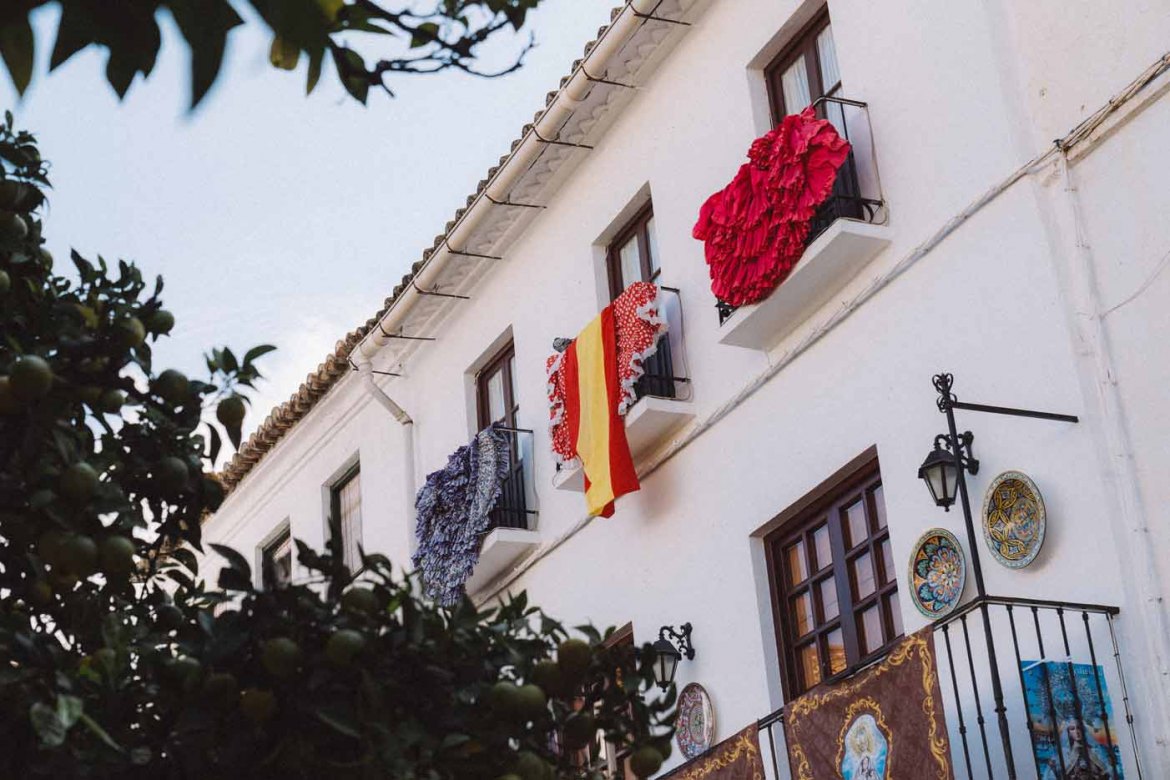
An ideal itinerary to get to know the historic center begins on Lobatas Street, where the houses still have two floors. From there, you can go through the Plaza del Santo Cristo and down Ancha Street until you reach the Puente de Ronda, which will be the access to the popular Plaza de los Naranjos, a place visited by thousands of people.
There you will find the Casa del Corregidor, built in the 16th century, date from which dates also the old Town Hall, located in the same square. Next to it is the hermitage of Santiago, also built in the sixteenth century, which houses the images of the Cristo del Amor and María Santísima de la Caridad, carvings that are part of the Holy Week of Marbella.
Also in the historic center, you can find the parish of Nuestra Señora de la Encarnación, from the eighteenth century, whose three naves lead to the altarpiece of the main altar from where one of the most important organs in Andalusia can be seen. On a mahogany and silver altar rests the Soledad with its black mantle, one of the oldest carvings of Holy Week.
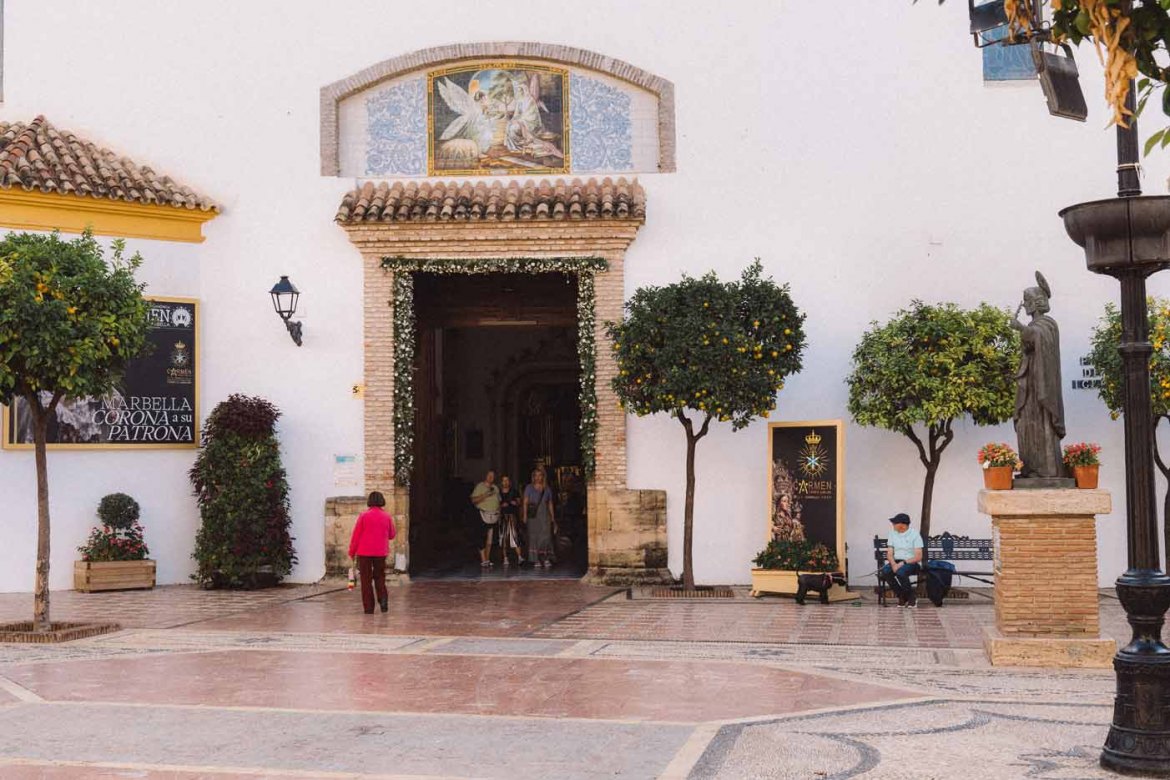
At the exit of the Encarnación, through the side door, you'll arrive at the well-known Calle del Viento, a narrow street flanked by white walls, which leads to the old Hospital de Bazán, founded by Don Alfonso Bazán (mayor of Marbella) in 1568. It was a house built to care for the neediest of the town and had an impressive Mudejar coffered ceiling. However, the passage of time has caused the building to be remodeled, and the Museum of Contemporary Spanish Engraving is now located in it.
Continuing along this same street, there are the ruins of the old Convent of the Trinity, where in the sixteenth and seventeenth century the Spaniards rescued from the Barbary pirates of Africa were sheltered and, according to tradition, in this place was hosted the famous writer Miguel de Cervantes, author of Don Quixote.
Leaving the Calle del Viento, you can look for the walls of the Barbican of the castle, an elevated fortress defended by the Arabs until their surrender. The highest part that remains is the one that overlooked the river, the stream of Represa, which is now embanked and was the one that served as a moat for the castle.
Legend has it that there are passages that connect the fortress with the sea. Tunnels lead to the beach where the Fort of San Luis stands, of which only a small tower remains. The remains now serve as a showroom of the beginnings of tourism in the city, as a hotel complex has been built in this place.
Related Read: 13 Historical Attractions in Marbella: A Journey Through Time
Lifestyle in the City Center
Downtown Marbella offers a vibrant blend of luxury, comfort, and convenience, making it an ideal place to live, invest, or retire. Its exceptional quality of life, combined with its thriving real estate market, attracts retirees seeking a peaceful yet cosmopolitan environment as well as real estate investors looking for lucrative opportunities.
Whether you're exploring the diverse dining options, enjoying family-friendly activities, or finding the perfect place to stay, the city caters to all lifestyles. With top-tier education and healthcare facilities, as well as tips to help you navigate the area, Marbella ensures that every aspect of life here is exceptional. Here's an overview of the key elements that define the lifestyle in Downtown Marbella:
- Gastronomy: A Culinary Journey in Downtown Marbella
- Family Leisure and Sports: Activities for All Ages
- Hotels: Where to Stay in Downtown Marbella
- Tips for Getting Around: Navigating Downtown Marbella with Ease
- Education: Top Schools and Learning Opportunities
- Healthcare: Premier Private Hospitals in Downtown Marbella
Gastronomy: A Culinary Journey in Downtown Marbella
Marbella is a culinary paradise, offering a gastronomic scene that caters to every taste imaginable. From traditional Andalusian fare to innovative, international flavors, the city is home to some of the finest dining experiences. Notably, Marbella boasts four restaurants with a total of five Michelin stars, making it the gastronomic capital of Andalusia. Whether you're seeking creative bistro dishes or a refined, Michelin-starred experience, Marbella’s diverse dining scene has something for every food lover.
Back
The chef David Olivas, born in Úbeda, gives a good example of his cooking know-how in the Marbella restaurant Back, recently awarded with a Michelin star and considered as a recommended restaurant in the Repsol guide. Back is a bistro where the idea, rather than eating constrained by the rigors of haute cuisine, is to have a good time and enjoy. To achieve this, it proposes to enjoy its free and creative cuisine with contemporary creations that are not exempt from detail and technique. The idea is to modernize the traditional flavors with fixed dishes and others that change according to the market.
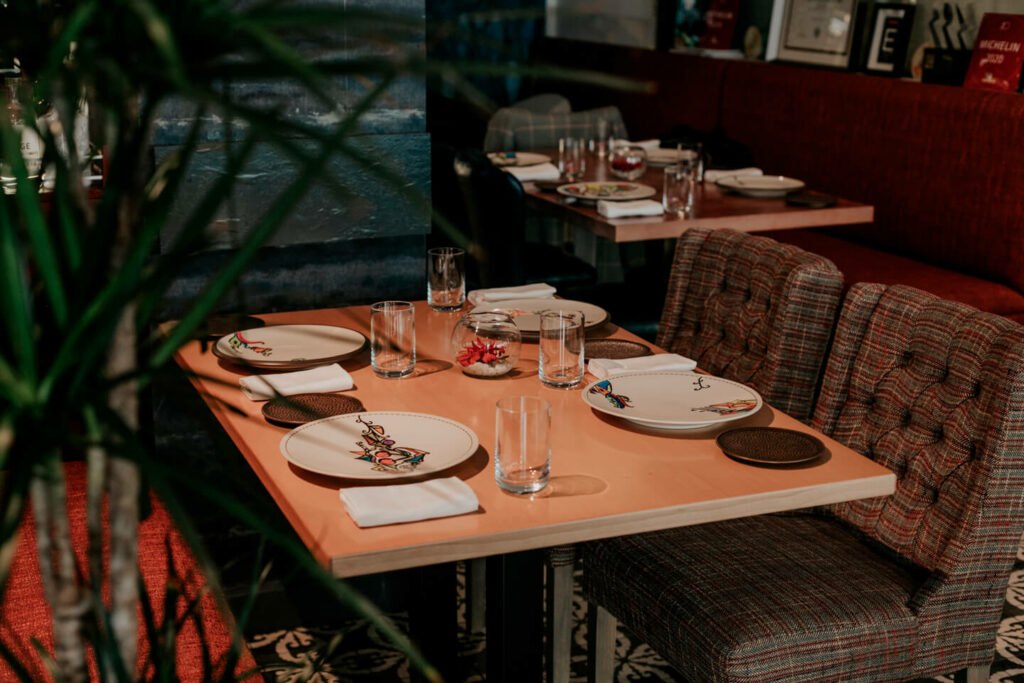
Messina
Messina is the restaurant of the Argentines Mauricio Giovanini (chef) and Pía Nincia (sommelier and head waiter), responsible for fusing the Argentinean and Mediterranean recipes in a masterful way, obtaining a Michelin star and a Repsol sun.
The restaurant opened its doors for the first time in 2003, so it is already more than two decades of trajectory. They have their own space on the second floor of the R&D establishment called InsIDe Messina, where it is also possible to make reservations. This 2024 the space has been renovated by opening the kitchen to the public and introducing a space called “The Chef's Table” to convey more faithfully the philosophy of its owners in what is a new stage in the history of the restaurant.
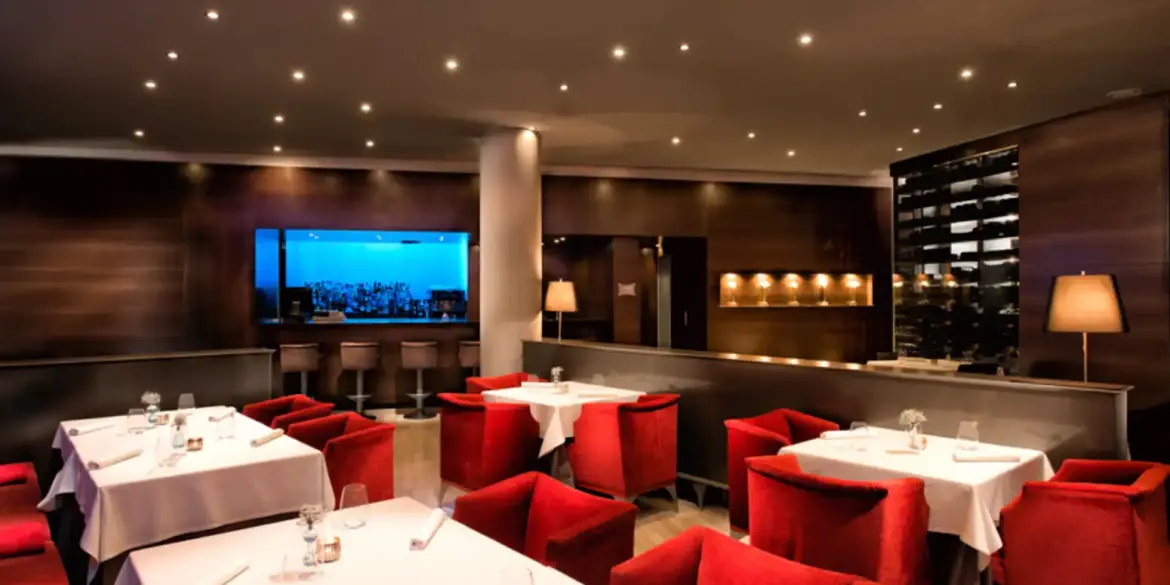
Nintai
The restaurateur Marcos Granda is responsible for Nintai, one of the most talked-about openings in the city of Malaga in recent times. Granda, who also runs the Skina restaurant, wanted here to capture what he saw after a trip to Japan in 2019 where he was captivated by the kaiseki culinary philosophy in which it is the chef himself, in this case the itamae, who defines each day the menu based on the best seasonal products. The space, for just a dozen diners, guarantees umami through all kinds of sushi, nigiri or sashimi.
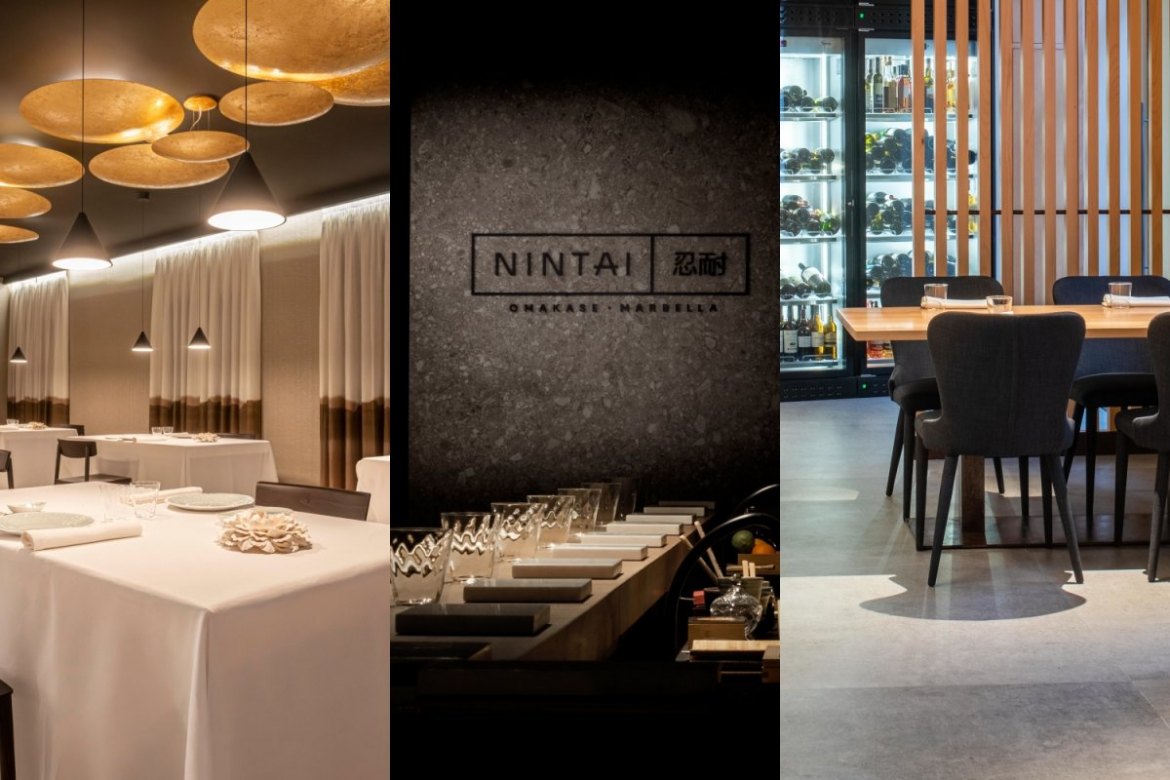
Skina
The first restaurant opened by Marcos Granda in Marbella is called Skina and chef Mario Cachinero is at the helm of its kitchen. After moving recently to an impressive farmhouse in the middle of Marbella's Golden Mile, Skina also opens a new stage in its history aspiring to everything. Today they have two Michelin stars and 3 Repsol suns that practically make them the best haute cuisine restaurant in Marbella. It is enough to go there to check it thanks to its dishes, designed as a contemporary vision of the traditional Andalusian recipes and based on seasonal products, proximity and the best quality.
If you're looking to discover even more incredible dining options in Marbella, check out our comprehensive guide to the best restaurants in Marbella. From hidden gems to world-renowned eateries, this guide covers everything you need to elevate your culinary journey in this vibrant city.
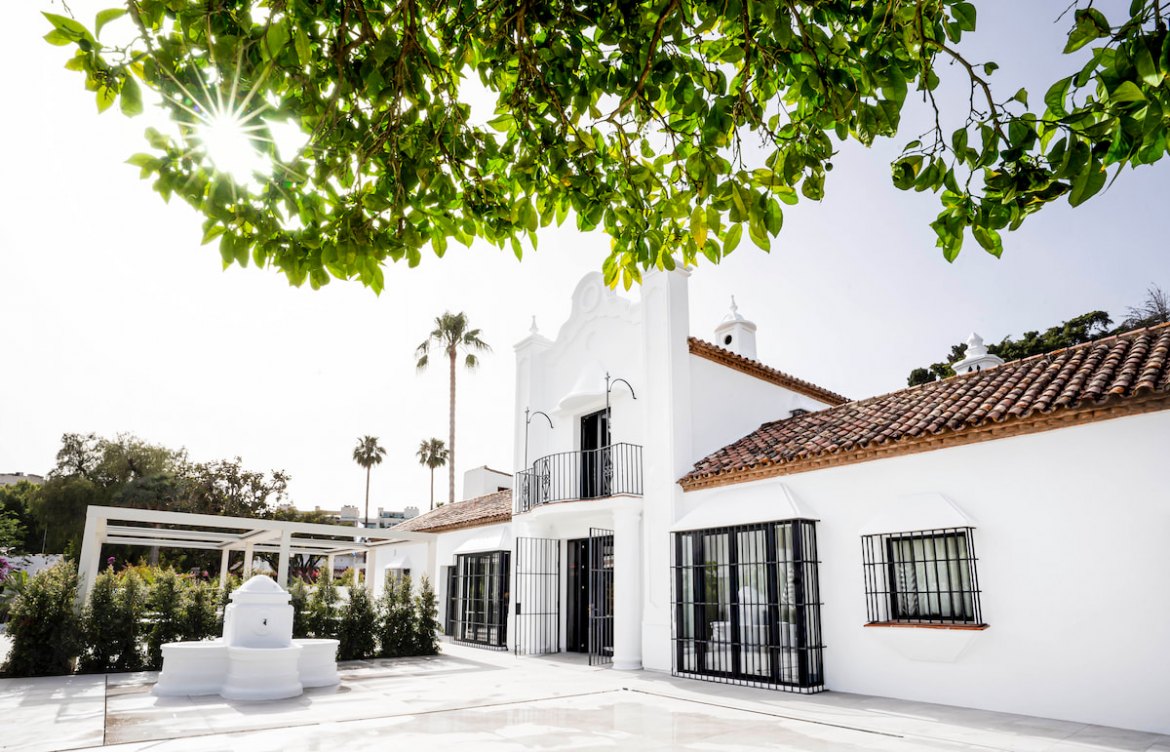
Family Leisure and Sports: Activities for All Ages
Marbella offers an abundance of family-friendly activities, with something for every age and interest. Whether you’re looking for thrilling water sports at the Virgen del Carmen Marina or a day of shopping and entertainment at La Cañada, Marbella ensures there's no shortage of fun. For nature enthusiasts, hiking in the Sierra Blanca mountains provides the perfect family adventure with scenic trails suitable for all skill levels. Marbella also boasts a variety of sports clubs, from volleyball and basketball to tennis and triathlon, ensuring that staying active is always an option.
Shopping and Market Experiences
La Cañada Shopping Center
La Cañada shopping center is the largest on the Costa del Sol and has more than 200 stores offering a wide variety of brands and products, including Zara, Victoria's Secret, Hollister, Sephora and Apple Store.
There is also a wide range of dining options. If you're looking for a restaurant, La Pappardella serves tasty Italian dishes, and The Sushi Bar offers a variety of Japanese bites. In addition, there are several fast-food options, such as Mcdonald's, Starbucks, and TacoBell, for a quick and delicious meal.
La Cañada also has eight movie theaters. There is also a movie theater that shows movies in both English and Spanish.
El Barato
The popular and picturesque Barato is a flea market held every Monday that fills the streets of the Las Albarizas area with stalls offering visitors just about everything. Clothes, handbags, jewelry and costume jewelry, hats, fabrics, food, fruit, vegetables, etc. In El Barato there is a mixture of Marbella ladies with their shopping carts and tourists attracted by the picturesque of this enclave.
For a deeper dive into Marbella’s shopping scene, from luxury boutiques to vibrant local markets, explore our detailed guide: Shopping in Marbella: From Luxury to Local Markets. Find everything you need to know about where to shop and what to expect in this shopper’s paradise!
Sports and Other Outdoor Activities
Marbella is a haven for both sports enthusiasts and outdoor adventurers. The city boasts a wide range of sports clubs and facilities catering to all ages and skill levels, from team sports like volleyball, basketball, and football to individual activities such as tennis, paddle, and triathlons.
Marbella's stunning natural landscape also offers fantastic opportunities for outdoor activities. Whether you're interested in hiking through the picturesque Sierra Blanca mountains, exploring the coastline with water sports, or simply enjoying the outdoors, Marbella ensures that there’s something for everyone to stay active and embrace the nature.
Virgen del Carmen Marina
Located in an unbeatable enclave in the center of the coast of Marbella, this port offers all kinds of options to enjoy water sports: jet skis, parasailing, scuba diving, etc. In addition, the Marina is an ideal meeting point to enjoy a drink while watching the sun set. There are several options of entertainment venues to dance and enjoy the good atmosphere and good music until the wee hours of the morning.
Hiking in Sierra Blanca
Two mountains in Sierra Blanca stand out. La Concha, the most iconic peak, is the defining feature of Marbella’s skyline, often seen in panoramic photos of the city. A challenging yet rewarding hike from the Juanar valley leads to its summit, taking at least six hours round-trip on a tough but breathtaking route. The second notable mountain is Cruz de Juanar, which can be reached in under two hours, also starting from the Juanar valley.
Marbella offers over 50 kilometers of well-marked and approved trails through the valleys to the south of Sierra Blanca, with three interconnected valleys that are perfect for hiking.
The first, Nagüeles, takes you through a valley rich in history, showcasing old lead mines and offering stunning views of Sierra Blanca. Next, the Los Monjes valley, accessed through the Xarblanca area, guides you deep into Sierra Blanca. This scenic trail runs alongside the Los Monjes stream, which is often full of water in the spring and winter, inviting hikers to take a refreshing dip in its crystal-clear pools. Lastly, the Puerto Rico valley, located near the La Cañada shopping center, leads you through lush forests along an ancient path to the Juanar valley, nestled in the heart of Sierra Blanca.
If you’re eager to discover even more hiking trails in and around Marbella, check out our guide: Best Hiking Trails in Marbella.
Hotels: Where to Stay in Downtown Marbella
Marbella has several hotels located very close to the old town of Marbella. If you prefer to stay in the center of Marbella and forget about taking the car, then these are your hotels: Obal Urban Hotel, Hotel Lima and Hotel El Fuerte. These are the three hotels founded by old Marbella families that have been able to adapt to modern times. All three hotels have been recently remodeled and, in fact, have increased their Stars. Obal Urban Hotel and Hotel Lima have 4 and Hotel El Fuerte has 5.
Within the Casco Historico there are also several boutique hotels of small size and high-quality standards. Such as La Fonda or Hotel Claude. If you are looking to get away from the hustle and bustle of the city and relax with your family, the best option is the Hotel Club Med Magna Marbella. This hotel establishment is located in the shadow of Sierra Blanca, making it ideal if you want to take a walk in the mountains before returning to cool off in one of its pools. The Hotel Club Med Magna Marbella was remodeled just two years ago and is specially designed for family leisure and therefore has extensive sports and entertainment facilities.
The Hotel Meliá Don Pepe is one of the most classic hotels, an icon of Marbella. It was the first luxury hotel to be built in Marbella, in 1964, and its first illustrious guest was Audrey Hepburn. It has 32,000 square meters of land facing the sea. It has also been a refuge for celebrities and personalities from different fields. Sean Connery, Omar Sharif, Prince, Arthur Rubinstein, Begun Aga Khan and Alain Delon, among others.
Tips for Getting Around: Navigating Downtown Marbella with Ease
Several tips to keep in mind if you want to move around Marbella center:
- Marbella is a very safe city, you can practically walk through all its streets without problems, but it is better to avoid the area of Las Albarizas at night.
- Two options for a breakfast made in Marbella: eat churros at the churrería in Plaza Victoria. The second: eat a “mollete de carne mechada” (a kind of local pulled pork sándwich) on the terrace of the classic Fiesta bar, inside the municipal market.
- The sunset with a gin and tonic from the terraces of one of the hotels in the center is one of the mandatory experiences if you want to know Marbella from the heights.
- Sitting on one of the benches of the Alameda under the centenary shady plane trees.
- Take some fried fish, anchovies and sardine skewers in the restaurants or beach bars in the fishing port of La Bajadilla.
- To make one of the routes by Sierra Blanca as the Vereda del Faro to enjoy the Nature.
- Visit the church of the Incarnation, the cathedral of the Costa del Sol and make the small pilgrimage to visit some of the chapels of the old town as the hermitage of Santiago, the Santo Cristo or San Juan de Dios.
- Stroll early in the morning along the promenade and have breakfast at Capuchino, the cafeteria on the beachfront of the hotel Don Pepe.
Education: Downtown Marbella's Top Schools and Learning Opportunities
École Française Internationale de Marbella (EFIM)
EFIM is a nursery and elementary school that offers an innovative trilingual education approved by the French National Education. The excellence of the children's education is guaranteed, in the French educational system, by a high scholastic level in many subjects, but also by the development of their personality, their critical and analytical thinking, their working method and their ability to work in groups.
Swans International School
Swans International School, founded in 1971, is one of the most prestigious institutions in Marbella. The school aims to help every child reach their full potential by providing an excellent learning environment. This commitment is reflected in their consistently high GCSE and IB results, which rival those of top students worldwide.
In addition to academic excellence, Swans places a strong emphasis on pastoral care. The school offers social and emotional support to all students, fostering a family-like atmosphere for both students and teachers. This approach encourages students to strive for their best, regardless of age or ability, ensuring they are fully prepared for life beyond education.
Marbella International University Centre (MIUC)
Marbella International University Centre is a private international university that offers one of the most impressive study environments in the cosmopolitan city of Marbella. MIUC is a large international community with students from over 90 nationalities. It offers 3-year bachelor's and 1-year master's degrees in the areas of Politics and International Relations, International Business Management, and Marketing and Social Media. All programs are taught entirely in English.
Marbella is home to exceptional educational institutions that cater to a variety of learning needs, from trilingual nurseries to prestigious international schools and universities. To explore more top international schools in Marbella that may be the perfect fit for your family, visit our comprehensive guide: Best International Schools in Marbella.
Healthcare: Premier Private Hospitals in Downtown Marbella
Quirón Group
QuirónSalud Group, part of the Spanish healthcare company IDCQ Hospitales y Sanidad, S.L.U., is a subsidiary of the German company Fresenius and the Goodgrower Group. With over fifty hospitals and nearly a hundred outpatient clinics, QuirónSalud is one of the largest Spanish private healthcare providers.
In Marbella, QuirónSalud serves patients from around the world, offering a unique healthcare experience with its stunning location overlooking the sea. The facility provides 24-hour services and a wide range of medical specialties, supported by a team of highly regarded professionals. By investing in cutting-edge medical technology, QuirónSalud ensures high-quality care and efficiency. The hospital has agreements with major Spanish health insurance companies and prioritizes patient care, ensuring that both patients and their families receive top-tier services.
Premium Clinic
Clínica Premium Marbella is committed to the health and well-being of patients and their families. To meet the diverse needs of its clients, the clinic has assembled a highly skilled medical team with extensive professional experience. With two centers offering over 30 medical specialties and healthcare services, Clínica Premium ensures comprehensive care for all patients.
The clinic operates two locations in the heart of Marbella: one at C/ San Juan Bosco, 8, and another at C/ Jacinto Benavente, 11. The Jacinto Benavente facility, spanning 900 square meters, features 20 medical consultation rooms, an outpatient operating room, a 150-square-meter Physiotherapy Unit with seven individual therapy spaces, and a newly added Aesthetic Medicine Unit.
Ochoa Hospital
Since its establishment in 1997, Hospital Ochoa has been dedicated to achieving excellence in healthcare, offering patients comprehensive services and personalized care. The hospital spans 6,000 square meters and includes various specialized areas such as 24-hour emergency services, radiology, surgery, endoscopy, recovery units, hospitalization, ICU, outpatient services, and a laboratory. A team of 180 doctors serves 37 medical specialties at this private facility.
Hospital Ochoa is also home to FIV Ochoa, one of Marbella's leading in vitro fertilization clinics. The fertility specialists at FIV Ochoa are committed to helping patients achieve their dream of motherhood. They offer a range of services, including artificial insemination, in vitro fertilization using either the patient’s own eggs and/or sperm or donor sperm, egg freezing, and embryo donation, all at competitive rates while maintaining high standards of care.
Real Estate in Downtown Marbella
The real estate market is going through a very sweet moment in Marbella Downtown, as well as in the whole Costa del Sol. Very few new housing developments are being developed in the center of the city and continuously, month after month, the price of housing and rent is increasing. As a result, there are very few properties for sale in Marbella Downtown and, when they do come up for sale, they do not last long on the real estate market.
One element that is conditioning this increase in the price of housing is the rise of tourist apartments. Throughout Marbella, there are more than 7,000 tourist homes, many of them in Marbella Downtown. In fact, it is a very common sight to see tourists with suitcases and trolleys touring the city center.
For this reason, it is very attractive to buy a property in Marbella Downtown, both as a first and second home and as an investment property.
Currently, apartments are being sold in blocks of apartments in neighborhoods such as Miraflores for between 210,000 and 250,000 euros for three-bedroom homes of between 80 and 100 square meters. On Avenida Ricardo Soriano, in the heart of the city center, apartments of 180 square meters and four bedrooms are being sold for 700,000 euros. On the beachfront, also in the center, apartments with two bedrooms and 100 square meters are being sold for 1 million euros.
The area west of Marbella Downtown, next to the sea, is one of the most sought after, as a number of high-quality buildings such as Mare Nostrum, Don Gonzalo, Cipreses del Mar, Gran Marbella, Atrium, Jardines del Mediterráneo, etc. are located there. An example: a 220 square meter apartment with three bedrooms on the beachfront is currently on sale for 6 million euros.
Right next door, but on the second line of the beach, there is the Don Gonzalo building, an apartment of 200 square meters with three bedrooms for 3.3 million euros. In the same area, a little further towards the center but also on the beachfront, you can buy a 95 square meter apartment with two bedrooms for 1.1 million euros.
As far as villas are concerned, one of 400 square meters on a plot of 800 square meters in the northern part, Valdeolletas and El Mirador area, is sold for 1.5 million euros. A little above this area, in Xarblanca, a villa of 420 square meters on a plot of 1,100 square meters is sold for 1.9 million euros.
Another example, a little closer to the city center and the Golden Mile, next to the Pirulí, was built in 2022 La Fuente, a development of villas of about 600 square meters in the shade of a spectacular pine forest that sold almost instantly for between 2 and 3 million euros. Currently, there are some units being resold for 4.5 million euros.
Another example of a villa for sale in an exclusive area such as Huerta Belón, very close to the city center is this: a villa of 850 square meters on a plot of 1,600 square meters is sold for 5.5 million euros.
With the market booming, now is a great time to invest in real estate in Downtown Marbella. If you're interested in buying property in Spain, make sure to check out our 5 Steps to Buying a Property in Spain guide for a detailed overview of the process and essential tips for securing your dream property.
Related Read: Sustainable Real Estate in Marbella: A Comprehensive Guide
Final Thoughts: A Guide to the Vibrant Core
Downtown Marbella remains one of the most sought-after locations on the Costa del Sol, offering a vibrant mix of history, culture, and modern living. From its charming Old Town to its bustling streets and beachfront locations, it’s a destination that attracts both residents and visitors year-round. The area continues to offer a lifestyle that balances relaxation with active pursuits, making it an ideal place to live, work, and play.
For real estate investors, Downtown Marbella presents a highly attractive opportunity. The demand for properties is high, with prices steadily rising due to limited availability and the growing popularity of tourist apartments. The area's real estate market offers significant potential for growth and return on investment.
Key Takeaways:
- Downtown Marbella combines rich history with modern amenities and a Mediterranean lifestyle.
- The Old Town and beachfront areas are particularly popular, with plenty of recreational options nearby.
- The real estate market is thriving, with rising property prices and limited availability.
- Properties, particularly tourist apartments, are in high demand, making this an attractive area for investment.
- With few new developments in the area, securing a property in Downtown Marbella presents a lucrative opportunity.
- The area offers a variety of properties, from luxury villas to stylish apartments, catering to a wide range of buyers and real estate investors.
If you're considering investing in the Marbella Downtown real estate market, now is the perfect time. With prices continuing to rise and limited availability, the opportunity to secure a property in this sought-after area won't last long.
Whether you're looking for a first or second home or a lucrative investment property, Marbella Downtown offers unmatched potential. Learn more about our agency and how we can assist you in finding the perfect property. Contact us today to explore the latest listings in the heart of Marbella!
If you want to get closer to other Luxury Marbella areas, read our fine selection of Area guides
Read more about Area Guides in Costa del Sol